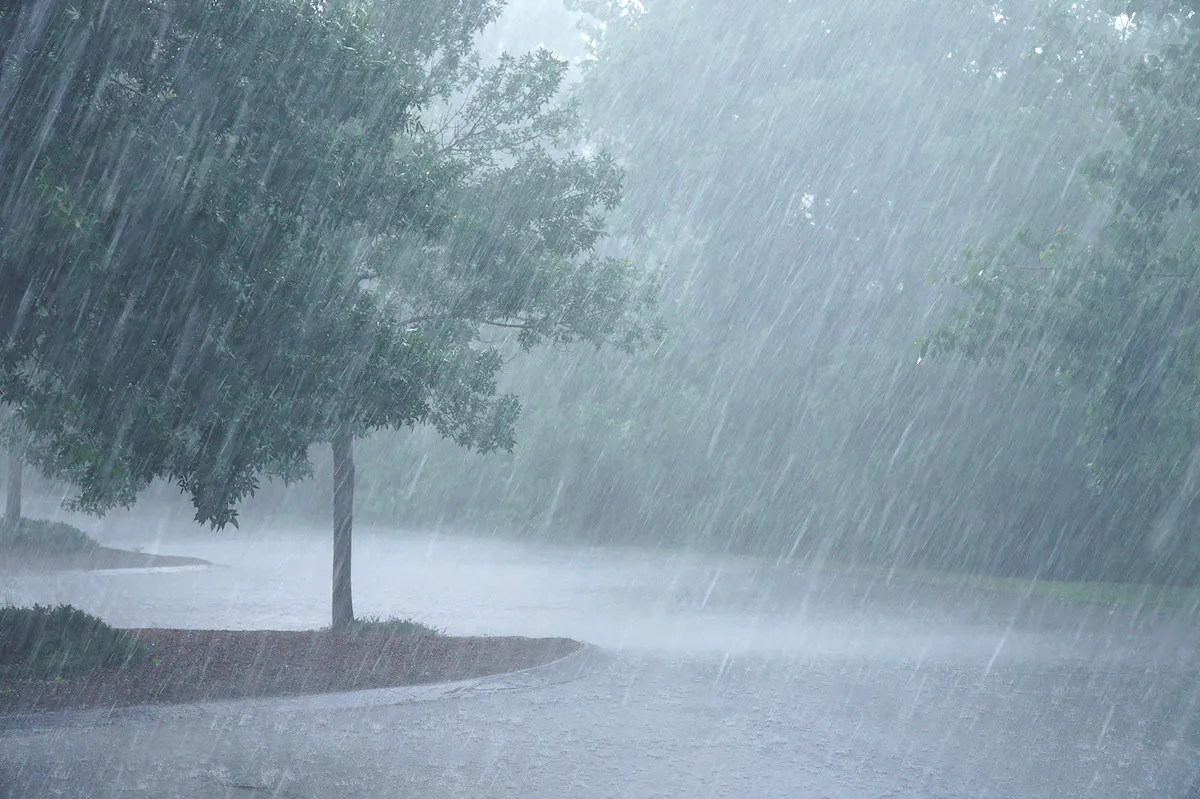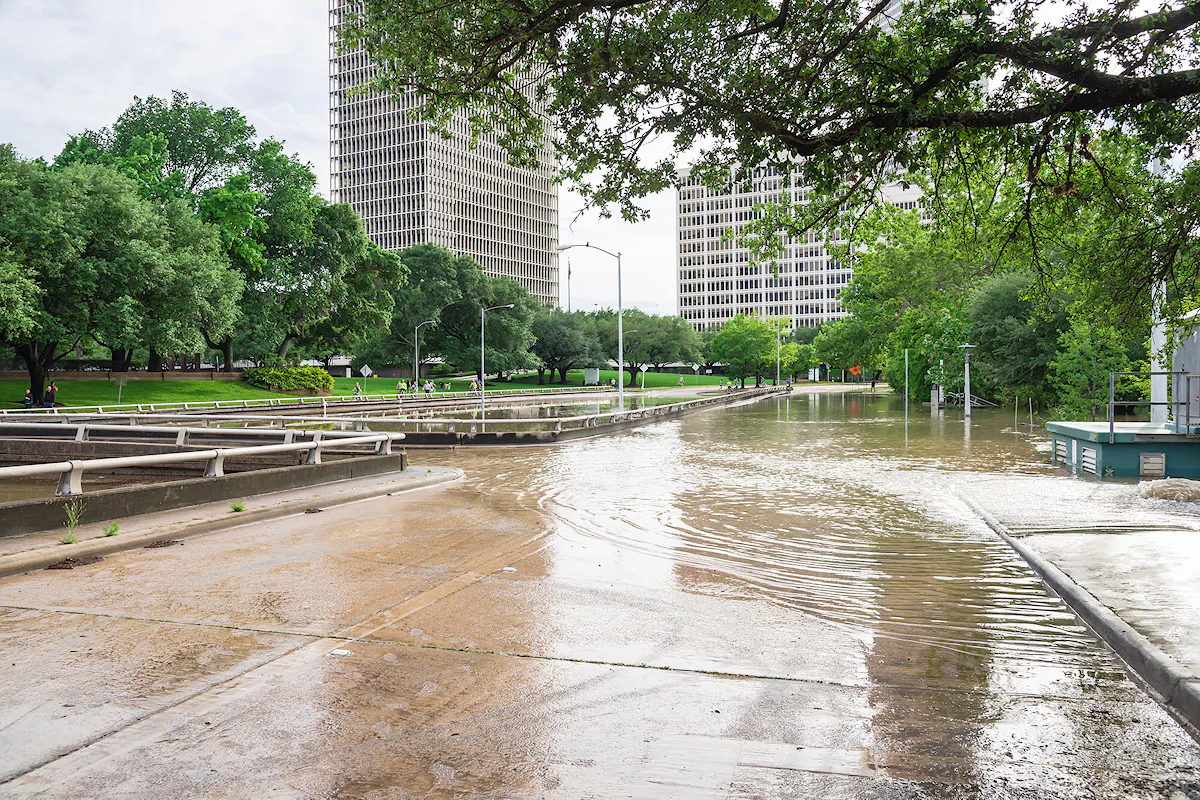This year is projected to be an extremely active Atlantic hurricane season, according to forecasters at the National Oceanic and Atmospheric Administration (NOAA). Due to La Niña and a warmer-than-normal tropical Atlantic, the group predicts an 85% chance of an above-normal hurricane season. The Weather Channel reports that predicted storm numbers are well above the 30-year average total.
With the hurricane season already underway – Hurricane Beryl already tore through Caribbean earlier this month – facility managers in vulnerable areas (Gulf Coast, mid-Atlantic and East Coast) need to ensure they are well-prepared to minimize potential damage and ensure the safety of their properties, staff, and clients. We asked KBS experts Jinan Strickland, VP of Vendor Development and Operations, and RVP Jonathan Parrish for their advice in preparing for the season. Strickland and Parrish have a combined 18 years of experience with KBS in managing janitorial services through violent storms throughout the Southeastern Atlantic and Gulf Coast areas, respectively. Here are their five key considerations.

1. Year-Round Preparedness and Proactive Planning
Well before hurricane seasons arrives, facility managers should adopt a mindset of continuous preparedness rather than reactive planning. This includes establishing – and maintaining – clear communication channels with clients, partners and internal teams; monitoring advance weather forecasts entering the hurricane season; and staying informed about the potential impact on high-risk areas, Strickland says.
By maintaining a state of constant readiness, facility managers can mobilize their teams and resources more quickly and efficiently when a hurricane does strike. This approach helps mitigate damage and allows for rapid deployment of necessary equipment and personnel.
“One of the reasons that KBS is successful in responding to major storms and hurricanes is that we are prepared year-round—it doesn’t just start when we see hurricanes in the forecast,” Strickland says. “We are always ready to address concerns, whether that’s for an event like COVID or a natural disaster.”

2. Comprehensive Communication Strategies
Effective hurricane response hinges on robust communication strategies. This means ensuring accurate contact data is confirmed with staff well ahead of any storm, sharing updates on storm forecasts, discussing safety measures with clients such as store closures, and defining roles and responsibilities for staff and vendor partners.
During a storm event, for example, KBS leadership prioritizes direct communication with local crews and clients to provide timely updates and support. This level of coordination ensures that all stakeholders are aware of the situation and can make informed decisions to protect their facilities and personnel.
At KBS, local teams are also supported by a Crisis Communication Response Team, which helps facilitate regular conference calls and communications in impacted areas to determine 1) whether employees and vendor partners are safe and need assistance, and 2) what clients need to close or open their operations based on conditions. As a best practice, Parrish likes to hold daily calls at a set time with impacted KBS leaders so they are kept up-to-date on the current situation and what to anticipate.
“Constant communication is so important,” Strickland adds. “We’re reaching out to staff and vendor partners to first make sure they’re safe. We also have back-office teams watching the forecast and staying updated on what local news stations are reporting. We’re constantly talking with clients about store closures and getting boots-on-the-ground reports of how an area is doing.”

3. Strategic Resource Management
Managing resources such as equipment, supplies, and manpower is critical during hurricane season, Strickland says. This could include securing access permits ahead of storms to designate clean-up crews as first responders; surveying teams to ensure they have the proper equipment, tools, and PPE they need; and making sure key equipment like scrubbers, pressure washers, and shop vacuums are charged and/or filled with gasoline.
Parrish emphasizes the importance of having several weeks' worth of supplies and equipment ready to perform contract specifications, including battery-operated halogen lights and manual cleaning tools such as mops and brooms. He also advises keeping a battery-operated radio to get the latest weather and road conditions updates.
“Whether crews will be dealing with flooding or broken glass, we make sure they have all the supplies and PPE they need ahead of time so they can go into any situation,” says Parrish. “We also recommend that our people have extra batteries for their phones, so we don’t lose contact.”

4. Flexibility and Adaptability in Operations
It’s essential for facility managers to remain flexible and adaptable when facing a hurricane. They should organize their teams based on factors such proximity to affected areas, fuel and power availability, and skill sets, Strickland says. She also emphasizes coordination with external vendors and partners to ensure seamless operations.
Strickland makes it a point to confirm where employees will be going if they need to evacuate storm area. She also helps pre-plan alternate routes in case a crew member’s regular route is closed due to bad road conditions. Once the storm ends, KBS leadership contacts crews to ensure they’re safe and get an estimate on when they will be back in the area to support clean-up efforts.
Parrish said crews may be asked to work in different accounts and locations than they normally would be to help conserve fuel and avoid lengthy commutes and road closures. For instance, a crew member who usually manages the south side of Miami, FL, might temporarily cover the north side until things return to normal.

5. Clean Up Support and Reassurance
Once the storm has passed, the real work begins. Strickland notes that facility managers should be prepared to clean up insulation, sweep broken glass, extract water from carpets, clean up broken merchandise, and get everything cleaned inside and out so the facility is ready to reopen.
Depending on the type of building, facility managers must be prepared to get back to business quickly, Strickland says. Clients that operate home renovation sites or grocery stores often have heavy loads of traffic as customers try to clean up after the storm. To help those experiencing a surge of traffic, she notes that KBS is there to provide extra staffing to stock shelves, perform porter services and make sure they have everything they need to help the community get back up and running.
Partner with KBS
By integrating these strategies into your hurricane preparedness plans, facility and operations managers can minimize disruptions and protect assets during the upcoming hurricane season. For more information on KBS and its trusted services, request a quote today.
